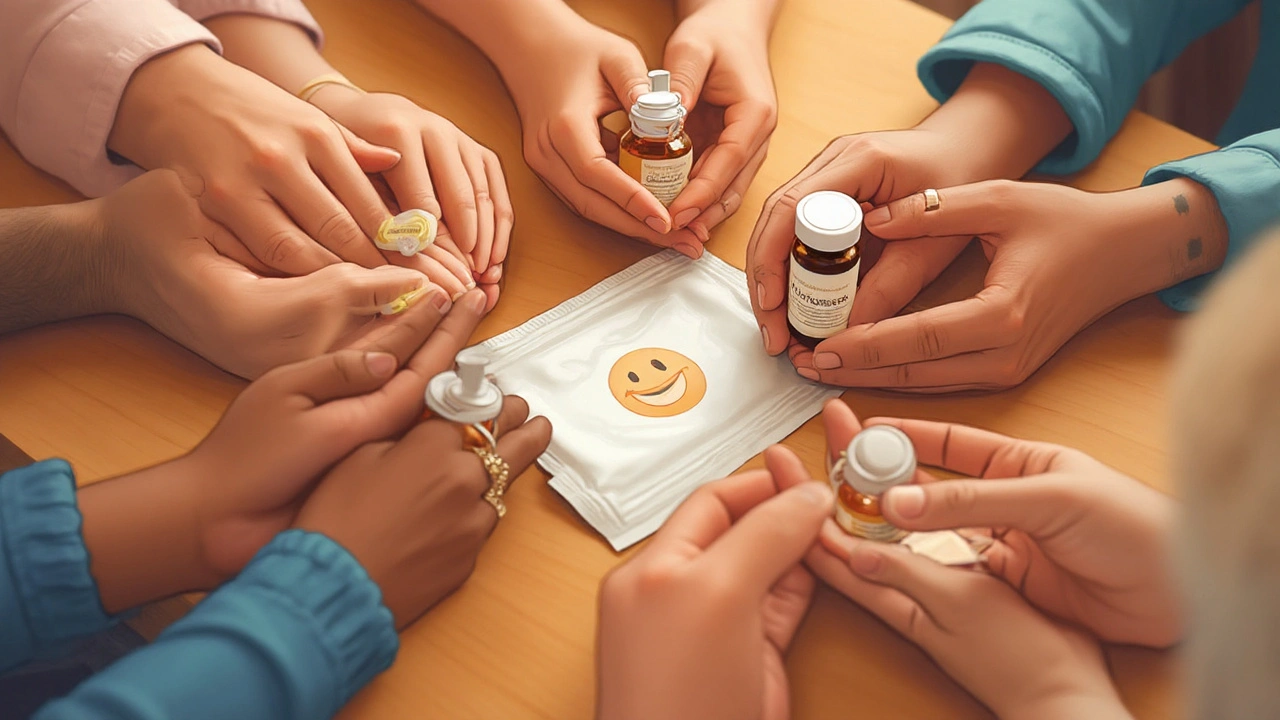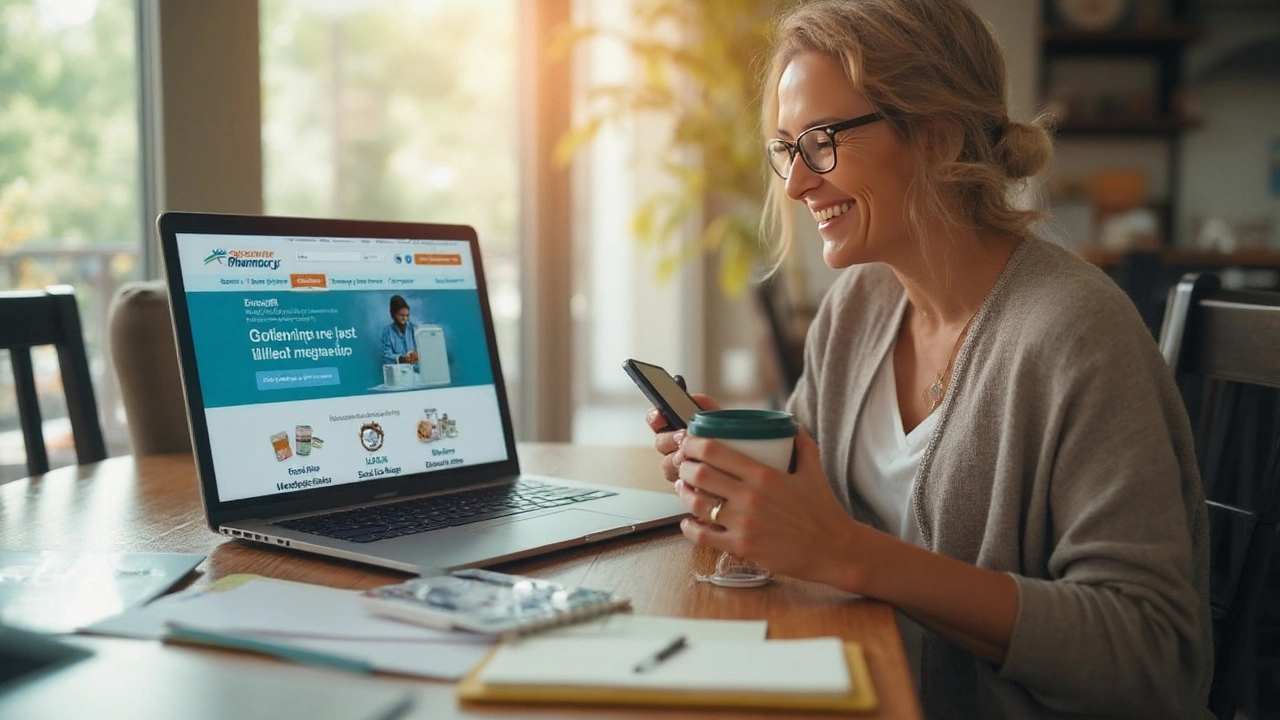Finding safe and legit ways to buy prescription meds online sounds simple, but the real story? It's rarely straightforward. Navigating the world of online pharmacies, medical regulations, and fake shops gets especially tricky if you’re after something like Micronase—a trusted medicine for type 2 diabetes. The past few years have seen an explosion of online pharmacies, some honest and others pure scams. If you're scrolling your phone at midnight, wondering if your order will be real or turn out to be sugar pills, you're not alone. The risks of getting counterfeit or sub-par meds are real: not just a waste of money but a real threat to health.
What Is Micronase and Why Buy It Online?
Micronase is a well-known brand name for glyburide, a prescription drug that helps manage blood sugar in adults with type 2 diabetes. Doctors often choose Micronase for patients who need help beyond diet and exercise. Proper blood sugar control means fewer complications—think fewer heart attacks, better eye and kidney health, and, yes, more energy to run after kids or walk your dog. Traditionally, Micronase was a brick-and-mortar pharmacy item, tucked safely behind the counter. But with digital healthcare booming since 2020, more people want their meds delivered straight to their door—fast, private, and less hassle. That’s especially true for those juggling work, unpredictable schedules, or maybe just keen on dodging Durban’s chaotic taxis.
Buying diabetes meds online comes with its own set of perks. Convenience is the no-brainer—you order once, and it gets delivered whenever you want. For folks dealing with repeat prescriptions, automatic refills make forgetting to restock pretty much impossible. Price is another biggie: many online pharmacies run discounts or generic alternatives that can be way cheaper. Privacy is the unspoken draw: for some, picking up diabetes medication at a local pharmacy means explaining things to nosy neighbors or chatty staff. Ordering online avoids awkward moments, and—let’s face it—sometimes you just don’t want to get out of your pajamas.
But there’s a real issue hidden beneath the surface: not every online offer is what it claims. Some sites use names that sound almost like trusted pharmacies, but they don’t actually follow any regulations. In 2024, the World Health Organization estimated that 1 in 10 medical products sold in low- and middle-income countries online were either substandard or fake. It’s a massive problem if you have diabetes since any variation in your medicine can throw off your blood sugar levels. Even in places with more oversight, like the UK or Australia, online scammers operate across borders, sometimes vanishing overnight and popping up elsewhere. It’s the digital Wild West—but with higher stakes.
Beyond safety, some people end up with the wrong dosage or even a treatment they don’t really need. Real pharmacies always ask for a recent prescription and sometimes even run their own checks, but sketchier websites could sell you anything. If you’re thinking about trying online shopping for Micronase, knowing the risks and asking the right questions makes all the difference. You’re not just buying a pill—you’re buying trust and your future peace of mind.
How to Choose a Safe Online Pharmacy for Micronase
Scrolling endless pages of online pharmacies can get overwhelming, especially when every site promises to be the cheapest, the fastest, or the most private. But safe online shopping starts with knowing what to look for—and what to avoid. If a pharmacy doesn’t require a prescription, that’s your first red flag. Legit pharmacies always want to see proof from your doctor before they ship anything, even if it’s just a refill. Sites that skip this step are more likely to sell counterfeit meds or ignore your health needs entirely.
Next, check for a physical address and a way to talk to a real human—phone or chat. No address? That’s another warning sign. In Europe, for example, reputable pharmacies display an EU Common Logo showing their official registration. In South Africa, the South African Pharmacy Council (SAPC) runs a public register—if a site isn’t listed, it’s not legit. You can search for approved pharmacies right on the SAPC’s website. And if you’re buying from somewhere else, check if their pharmacy has similar proof of registration—like the .pharmacy domain in the US or UK’s General Pharmaceutical Council certification logo. If you never find these, look elsewhere.
Reviews matter, but watch out for fakes. Read independent review platforms, not just the pharmacy’s website. Look for consistent feedback about delivery times, customer support, and product quality. Some people share stories about delayed shipments or receiving the wrong medication—these are golden signals about how a pharmacy really operates. If you see the same five-star review pasted repeatedly or obviously fake accounts, steer clear. Privacy policies are also worth checking. Good pharmacies won’t share your info or spam you later with unrelated offers.
What about prices? Super low prices look tempting, especially if you pay out-of-pocket for Micronase. But if the offer is too good to be true—think half or a quarter of what local pharmacies charge—it probably is. Fake sites lure buyers with rock-bottom prices only to ship sugar pills or, worse, nothing at all. Most decent online pharmacies are competitive but rarely dirt-cheap. Reliable sites also spell out shipping fees, clear return policies, and offer customer service before and after you order.
Look for secure payment options, like credit cards or PayPal. Wire transfers or sketchy cryptocurrency-only payments are a sign the pharmacy doesn’t want to be traced. Avoid any pharmacy that pushes these as the only payment methods. Lastly, check if the pharmacy offers proper storage and shipping—heat-sensitive meds need insulated packaging to stay effective, especially in a place like Durban where August heatwaves aren’t a joke. Your medication should arrive properly sealed, labeled, and with clear instructions.

Steps to Buy Micronase Online: A Practical Checklist
Ever feel lost juggling dozens of pharmacy websites, each promising fast shipping and miracle discounts? Cut through the noise by following a set plan. Here’s how to safely buy Micronase online, step by step:
- First, get an up-to-date prescription from your doctor. This shouldn’t be a one-time thing—regular check-ins ensure your dosage still fits your needs and that Micronase is the right choice.
- Use trusted sources to find online pharmacies. The SAPC is the top authority in South Africa, but if you’re abroad, national health boards like the NHS in the UK or the FDA in the US maintain lists of safe providers. Google “approved online pharmacy [your country]” for current details.
- Check each pharmacy’s credentials before making an account. Look for certification logos, public registration numbers, and reviews beyond the pharmacy’s website. Cross-check addresses and phone numbers—don’t be shy to make a test call if needed.
- Make sure the pharmacy requires your prescription before you add anything to your cart. If you can buy without uploading your script or talking to a healthcare provider, it’s probably a scam.
- Compare prices, but be suspicious of wild discounts. Safe pharmacies set prices similar to brick-and-mortar shops—even generics will only be slightly cheaper.
- Know the shipping policy. Check if they offer tracked or insured delivery, especially if you’re ordering larger amounts. Some offer overnight shipping, but others can take up to a week or more, so plan ahead to avoid last-minute gaps.
- Review return and refund policies. If your order arrives damaged, wrong, or you change your mind, you’ll want to know your options upfront.
- Pay with secure options. Credit cards give you protection from fraud. Some pharmacies accept payment on delivery inside South Africa, which is safer for many buyers.
- Keep a close eye on the packaging when your order arrives. The box should be sealed and show the correct medicine name, dosage, and expiry date. If it looks off, contact the pharmacy and your doctor immediately.
- Store your Micronase properly—room temperature is best. If the box comes hot or damaged, don’t risk taking it.
Some additional tips? Set calendar reminders for when to reorder, and always have a backup plan if shipments get delayed. If you travel, check if your online pharmacy can reroute medication or send to travel addresses. And if you spot issues, report dodgy pharmacies to local authorities—your tip could save someone else a nasty mishap.
What to Expect After Buying Micronase Online
Once you’ve hit ‘pay’ and gotten your confirmation email, don’t just relax and forget about it. Keep track of your order timeline. Most reputable pharmacies send tracking numbers and estimated delivery dates. In Durban and other big cities, expect delivery within two to five days if the pharmacy operates locally. International orders might run longer, thanks to customs and logistics hiccups. If your order is late or there’s no tracking update, contact the pharmacy right away. Good ones respond fast—dodgy ones, not so much.
If your package arrives, open it carefully and double-check everything. The medicine should look exactly like what your pharmacy delivered before. If Micronase is your regular brand, don’t ignore weird changes like different pills, new packaging, or fuzzy prints on the label. It usually means it’s a different generic or (rarely) a counterfeit. Feel free to call your pharmacist or even compare tablets with your old stash. It’s not being paranoid—it’s being smart.
Most online pharmacies include a copy of your prescription with the order, along with paperwork on how to use, store, and dispose of any leftover meds. Keep the receipt and paperwork—handy if you need refills or prove a payment glitch. If there’s any allergic reaction, side effect, or if the medicine doesn’t seem to work as well, let your doctor know immediately. Never change the dose or swap brands without medical advice. While generics are usually safe (as checked by regulatory bodies), subtle differences can matter for sensitive bodies.
Always keep Micronase away from heat and humidity—Durban’s summer can play tricks on your meds. Kids, pets—even my own sneaky cat Sable—shouldn’t get close to your medicine. If any tablets break, change color, or smell odd, dispose of them as the pharmacy instructs. It’s tempting to save a few pills for “just in case,” but expired meds won’t control your sugar or, worse, could make things unpredictable.
Finally, don't ignore follow-up emails from your pharmacy—they often remind you when to reorder or share updates about recalls. Sometimes, pharmacies launch apps to make tracking and reordering even easier. If you’re tech-savvy, use those tools to set everything on autopilot.
Safe, reliable online shopping for buy Micronase online is possible if you stick with the basics: check your source, guard your personal info, and keep in touch with real healthcare providers. With more people managing chronic health conditions from home, these skills are now just as crucial as choosing the right medicine in the first place. The key is seeing your health as a long game—smart shopping, smart choices, and a little curiosity for what’s new on the pharmacy scene each year.
